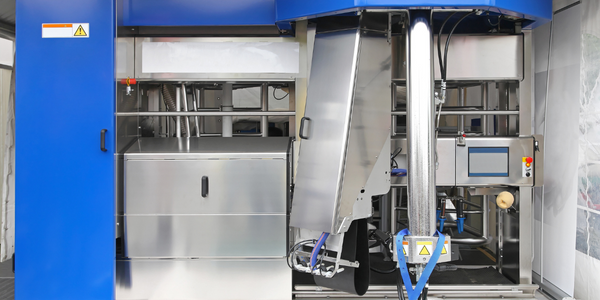公司规模
Mid-size Company
地区
- Europe
国家
- Germany
产品
- DocuWare
- ABBYY FlexiCapture 8.0 Professional
技术栈
- HP servers
- 5 Terabyte storage solution
- Citrix terminal connection
实施规模
- Enterprise-wide Deployment
影响指标
- Productivity Improvements
- Cost Savings
技术
- 应用基础设施与中间件 - 数据交换与集成
- 分析与建模 - 过程分析
适用功能
- 商业运营
- 采购
用例
- 过程控制与优化
- 库存管理
服务
- 系统集成
- 数据科学服务
关于客户
Prophete GmbH & Co. KG 是一家领先的两轮车制造商和批发商,总部位于德国雷达-维登布吕克。该公司成立于 1908 年,从一家小型自行车修理店发展成为该领域的专家。Prophete 将其成功归因于多种因素,包括优质的服务和模范的物流。该公司拥有一个庞大的数据中心,结合了 HP 服务器和强大的 5 TB 存储解决方案。通过宽带 Citrix 终端连接,220 名员工可以访问雷达-维登布吕克和 200 公里外的奥尔登堡的业务软件应用程序。
挑战
Prophete 是一家领先的两轮车制造商和批发商,需要在客户对合理价格、快速可用性和高质量服务的需求之间保持平衡。他们意识到需要现代 IT 程序来提高业务流程的效率以及向客户和销售合作伙伴传达信息的能力。这导致他们在 2006 年决定通过引入集中式文档管理系统来扩展其 IT 部门的文档存储库。该公司需要一个具有全公司访问权限、工作流功能以及与 Navision 和 ABBYY FlexiCapture 8.0 Professional 集成的中央文档存储库。
解决方案
Prophete 选择 DocuWare 是因为其性价比高、许可协议简单、用户界面直观,并且能够连接 Navision ERP 系统和工作流模型。文档管理系统的实施是循序渐进的,首先是与 DocuWare 一起举办的为期三天的研讨会,以确定项目的关键方面。随后是为期两个月的试点阶段,以明确定义和调整所有数据结构和字段。第二阶段涉及实施工作流系统,将 Prophete 的业务流程转换为精确的电子副本。该公司还使用 ABBYY 的 FlexiCapture 8.0 自动处理不同的传入文档。
运营影响
数量效益

Case Study missing?
Start adding your own!
Register with your work email and create a new case study profile for your business.
相关案例.

Case Study
System 800xA at Indian Cement Plants
Chettinad Cement recognized that further efficiencies could be achieved in its cement manufacturing process. It looked to investing in comprehensive operational and control technologies to manage and derive productivity and energy efficiency gains from the assets on Line 2, their second plant in India.

Case Study
Airbus Soars with Wearable Technology
Building an Airbus aircraft involves complex manufacturing processes consisting of thousands of moving parts. Speed and accuracy are critical to business and competitive advantage. Improvements in both would have high impact on Airbus’ bottom line. Airbus wanted to help operators reduce the complexity of assembling cabin seats and decrease the time required to complete this task.

Case Study
Hospital Inventory Management
The hospital supply chain team is responsible for ensuring that the right medical supplies are readily available to clinicians when and where needed, and to do so in the most efficient manner possible. However, many of the systems and processes in use at the cancer center for supply chain management were not best suited to support these goals. Barcoding technology, a commonly used method for inventory management of medical supplies, is labor intensive, time consuming, does not provide real-time visibility into inventory levels and can be prone to error. Consequently, the lack of accurate and real-time visibility into inventory levels across multiple supply rooms in multiple hospital facilities creates additional inefficiency in the system causing over-ordering, hoarding, and wasted supplies. Other sources of waste and cost were also identified as candidates for improvement. Existing systems and processes did not provide adequate security for high-cost inventory within the hospital, which was another driver of cost. A lack of visibility into expiration dates for supplies resulted in supplies being wasted due to past expiry dates. Storage of supplies was also a key consideration given the location of the cancer center’s facilities in a dense urban setting, where space is always at a premium. In order to address the challenges outlined above, the hospital sought a solution that would provide real-time inventory information with high levels of accuracy, reduce the level of manual effort required and enable data driven decision making to ensure that the right supplies were readily available to clinicians in the right location at the right time.










